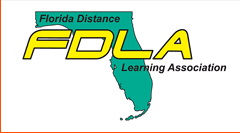Abstract
The Coronavirus Infectious Disease 2019 (COVID-19) pandemic disrupted the higher education sector worldwide in several disciplines, especially those in healthcare as well as science, technology, engineering, and mathematics (STEM) that require active, experiential learning via practical application of concepts centered around physiology. Dynamic instructional and technological interventions took place rapidly in an effort to minimize the adverse repercussions of moving away from traditional means of education in these critical scientific fields. COVID-19 necessitated administrators, faculty, students, and interns at colleges, universities, medical/healthcare science programs and residencies to pursue teaching, learning, and assessment of physiology courses/curricula through innovative strategies without compromising the quality or rigor of education. Adaptation and integration of remote/hybrid learning and teaching methodologies were essential. Alternative synchronous and asynchronous approaches of e-pedagogy were implemented through simulation labs, virtual cadaver dissections and histological examinations, recorded video-lectures, online meeting platforms, and cutting-edge technological software and tools to maintain the quality of education while prioritizing everyone’s health and safety. Based on the differences between the levels of schooling, each type of schooling dealt with the ramifications of COVID-19 on physiology education differently. This systematic review encapsulates, for the first time, original reports published around the globe from the past three years on such key implications of COVID-19 in physiology higher studies, combined with relevant recommendations. This comprehensive analysis would help improve the content, delivery, and efficacy of education in this clinically important discipline to facilitate better preparation for future pandemics.
Recommended Citation
Mahajan, Sean and De, Santanu
(2025)
"Global Impact of COVID-19 Pandemic on Higher Education in Physiology,"
FDLA Journal: Vol. 9, Article 38.
Available at:
https://nsuworks.nova.edu/fdla-journal/vol9/iss1/38
Included in
Biology Commons, Higher Education Commons, Medicine and Health Sciences Commons, Online and Distance Education Commons, Physiology Commons
